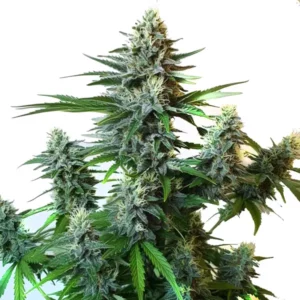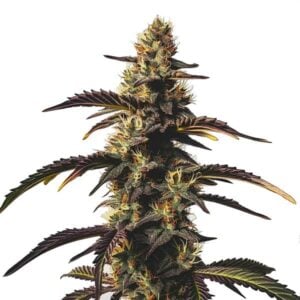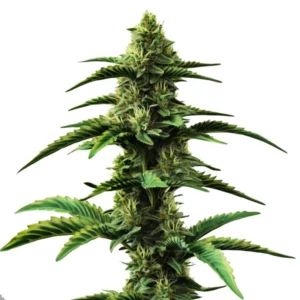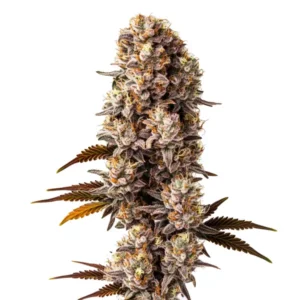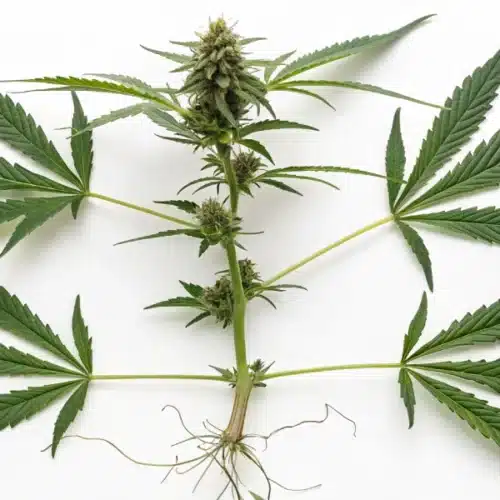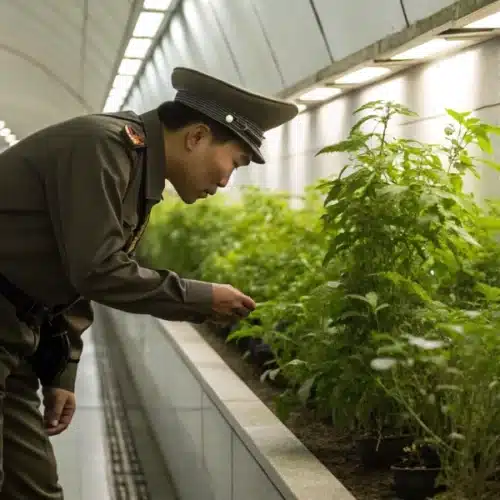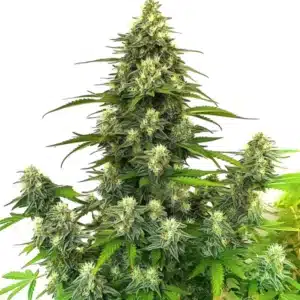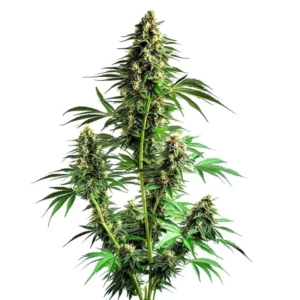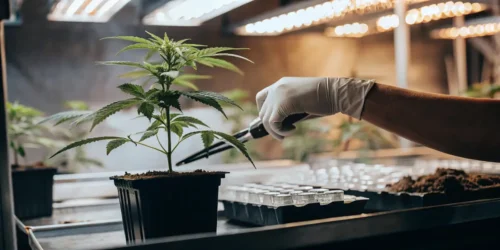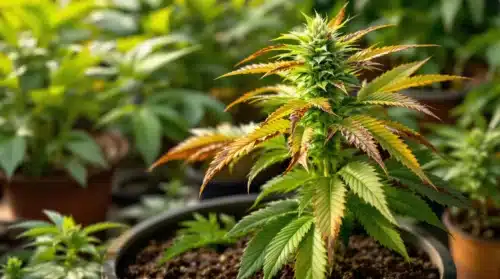Optimizing the growth of autoflower cannabis strains requires careful attention to environmental factors. Using an autoflower VPD chart ensures you maintain the perfect balance between temperature and humidity, unlocking the potential for better yields and healthier plants. With the right knowledge, growers can significantly enhance both quality and quantity in their harvests.
Autoflower VPD Chart
What is Vapor Pressure Deficit (VPD)?
Vapor Pressure Deficit (VPD) measures the difference between the amount of moisture in the air and the maximum amount it can hold at a given temperature. It directly impacts plant transpiration and growth by influencing how efficiently plants take up water and nutrients from their roots.
When VPD is within the optimal range, cannabis plants thrive as water evaporates from their leaves at a healthy rate, encouraging nutrient absorption. Too high or too low, and you risk nutrient deficiencies, wilting, or mold issues. Maintaining the proper VPD ensures that your plants receive the support they need for robust, healthy growth throughout their lifecycle.
How VPD Differs for Autoflowers vs. Photoperiod Strains
The debate around autoflower vs photoperiod plants often centers on their environmental needs. Autoflowers have unique growth patterns due to their shorter lifecycle and smaller stature, meaning their VPD requirements are more specific. Unlike photoperiod plants, autoflowers transition from vegetative to flowering stages without changes in light cycles, making consistent environmental conditions even more critical.
Tailoring the VPD to match autoflowers’ rapid growth ensures that they thrive throughout their lifecycle. Ensuring consistent VPD levels at each growth stage minimizes stress and optimizes bud production, giving growers the best results possible in a shorter timeframe.

Promos & Deals
Benefits of Using a VPD Chart for Autoflowers
Maximizing Yield and Potency
Maintaining an optimal VPD boosts the overall performance of your autoflower cannabis plants. When the VPD is correct, plants transpire efficiently, ensuring they take in nutrients without stress. This directly translates to better bud development, enhanced potency, and greater yields.
The optimized VPD also ensures even photosynthesis, creating robust, resinous flowers that stand out in both quality and quantity. Additionally, growers can achieve consistent results across multiple cycles, making it easier to predict harvest outcomes.
Reducing Stress During Growth
Improper VPD levels can stress your plants, leading to slowed growth or susceptibility to pests and diseases. Maintaining the right VPD minimizes these risks, ensuring your plants grow in a stable and healthy environment. Stress reduction is especially vital for autoflowers, as they have less time to recover from environmental setbacks.
By reducing stress, you also decrease the likelihood of nutrient lockouts or environmental shocks that can stifle development or cause bud rot during flowering. Healthy plants produce better-tasting, more potent buds, giving you a superior end product.
Key Components of an Autoflower VPD Chart
Ideal Temperature Ranges
Temperature plays a vital role in creating the perfect VPD. For autoflowers:
- Seedling Stage: 70°F to 75°F (21°C to 24°C)
- Vegetative Stage: 72°F to 78°F (22°C to 25°C)
- Flowering Stage: 68°F to 75°F (20°C to 24°C)
Maintaining these ranges prevents heat stress while allowing optimal transpiration. Consistent temperatures also promote healthier root zones and reduce the risk of environmental fluctuations affecting plant growth.
Optimal Humidity Levels
Humidity complements temperature to create the right VPD. Suggested levels for autoflowers are:
- Seedling Stage: 65%-70%
- Vegetative Stage: 50%-60%
- Flowering Stage: 40%-50%
Balancing humidity ensures plants stay hydrated without promoting mold or mildew. Proper humidity levels are crucial for enhancing resin production during the flowering stage, which is why VPD cannabis flower strategies should be applied to boost potency and flavor.
Interpreting the Chart for Daily Use
Use the VPD chart to adjust your grow room’s temperature and humidity daily. Monitoring these factors helps you maintain an environment that supports each growth phase effectively. The chart serves as a guide to fine-tuning your setup, ensuring optimal conditions for growth.
Invest in hygrometers and thermometers for accurate readings, and use automated systems if possible to simplify adjustments. Regularly checking and calibrating your equipment ensures long-term success and minimizes risks associated with environmental inconsistencies.
How to Use an Autoflower VPD Chart Effectively
Calibrating Your Environment
Setting up your grow environment to align with the autoflower VPD chart is crucial. Begin by calibrating your temperature and humidity levels to meet the specific needs of your plants. Use tools like hygrometers and thermometers to monitor these metrics in real-time.
Ensure your grow space has proper ventilation to maintain consistent air circulation. Ventilation helps regulate both temperature and humidity, preventing hotspots and stagnant air pockets that could harm your plants. Pairing this with a dehumidifier or humidifier, depending on your climate, allows precise control over your grow environment.
Monitoring and Adjusting VPD in Real-Time
Regular monitoring is essential to keep your VPD levels within the optimal range. Automated systems with sensors can track changes and alert you when adjustments are needed. These systems can also integrate with smart controls to adjust environmental factors automatically.
When plants show signs of stress, such as drooping leaves or discoloration, reassess your VPD settings. Early intervention prevents long-term issues and ensures healthy growth. By staying proactive, you can maintain a stable environment that supports your plants’ needs at every stage.
Maintaining Your Grow Space for Long-Term Success
Cleaning and Maintenance
Regular cleaning of your grow space is vital to prevent mold, pests, and other contaminants. Ensure all equipment, such as fans, lights, and meters, are functioning properly and free from debris.
Disinfecting surfaces and tools between cycles reduces the risk of disease, creating a safe environment for new plants. Maintenance routines should be consistent to support ongoing success.
Record-Keeping for Better Results
Documenting your VPD readings, adjustments, and plant observations helps refine your methods over time. By analyzing trends and outcomes, you can make informed decisions for future grows. Effective record-keeping is a powerful tool for any grower seeking consistent, high-quality yields.
Advanced Techniques for VPD Management in Autoflowers
Automating Your Grow Environment
Technology can significantly enhance your ability to manage VPD for autoflowers. Automated systems equipped with sensors for temperature, humidity, and airflow simplify the process of maintaining optimal conditions. Devices like smart controllers can adjust humidifiers, dehumidifiers, and fans in real-time, ensuring that environmental shifts don’t disrupt plant growth. Leveraging an autoflower VPD chart alongside these tools ensures precision and consistency.
For growers with larger operations, integrated systems can monitor multiple zones, providing detailed analytics and alerts. These tools save time and reduce the risk of human error, making them a worthwhile investment for achieving consistent yields. Regularly consulting your autoflower VPD chart helps fine-tune these systems for maximum efficiency.
Fine-Tuning VPD for Specific Autoflower Strains
Different autoflower strains may have unique environmental needs. For example, some strains thrive in slightly higher humidity levels during their vegetative stage, while others prefer drier conditions. Understanding the genetic background of your strain can guide these adjustments and ensure alignment with the autoflower VPD chart.
Experimentation and observation are key. Start with the recommended VPD ranges from your chart and monitor how your plants respond. Subtle changes in temperature or humidity can have significant effects on growth and bud quality. Adjustments should be made gradually to avoid shocking the plants and ensure compatibility with your autoflower VPD chart recommendations.
Challenges in VPD Management and How to Solve Them
Dealing with High Humidity
High humidity levels can lead to mold, mildew, and other fungal issues, particularly during the flowering stage. To combat this:
- Increase airflow with oscillating fans.
- Use a dehumidifier to bring humidity levels into the ideal range.
- Avoid overwatering, which can contribute to excessive moisture.
Consistently monitoring your grow room conditions using an autoflower VPD chart will help prevent these problems before they start, protecting your plants from harm. The chart provides a clear reference to maintain optimal humidity levels throughout all growth stages.
Addressing Temperature Fluctuations
Temperature fluctuations can disrupt VPD and stress your plants. Sudden changes in temperature are especially harmful to autoflowers, as they have less time to recover. Solutions include:
- Installing a thermostat to regulate heating and cooling systems.
- Insulating your grow space to reduce external temperature impacts.
- Using LED grow lights, which produce less heat compared to traditional lighting systems.
Maintaining stable conditions ensures your plants remain healthy and productive throughout their lifecycle. Referring to the autoflower VPD chart during temperature adjustments ensures you’re always in the optimal range for plant growth.
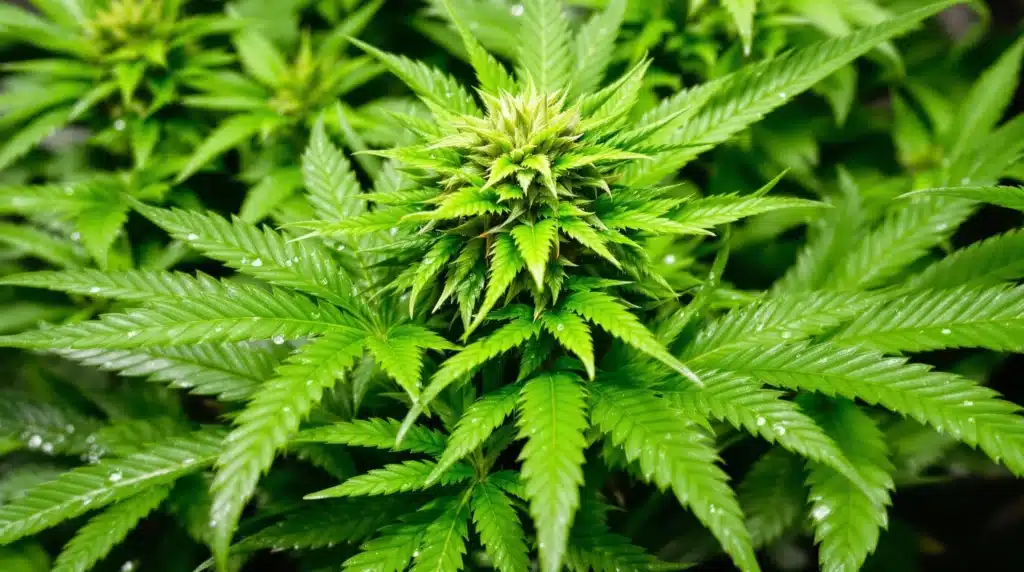
FAQs About Autoflower VPD Charts
What is the Ideal VPD for Autoflowers?
The ideal VPD varies depending on the growth stage:
- Seedling Stage: 0.8 – 1.0 kPa
- Vegetative Stage: 1.0 – 1.2 kPa
- Flowering Stage: 1.2 – 1.5 kPa
These ranges ensure that plants receive the right balance of humidity and temperature to thrive. Adjust as needed based on environmental conditions and plant responses.
Can I Use the Same VPD Chart for All Cannabis Strains?
While the principles of VPD apply broadly, autoflowers often require more precise adjustments due to their shorter lifecycles. Photoperiod strains may tolerate wider VPD ranges, but autoflowers benefit from consistent conditions tailored to their rapid growth.
Customizing your VPD chart to match the genetics of your autoflower strain can further optimize results. Researching specific strain needs can guide your adjustments.
How Often Should I Check VPD?
Daily checks are recommended to ensure consistent conditions. Automated monitoring tools can make this process easier, providing real-time data and alerts for deviations. Regular monitoring allows you to address issues promptly, minimizing risks to plant health.

